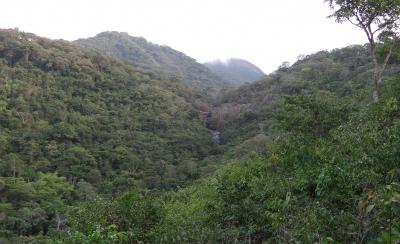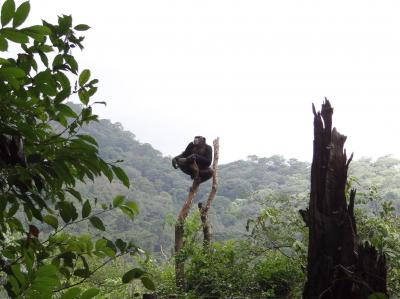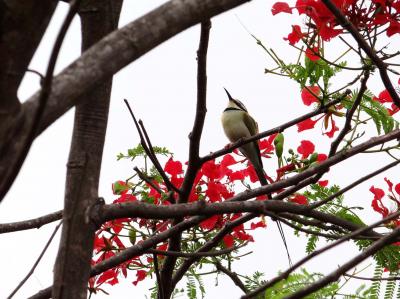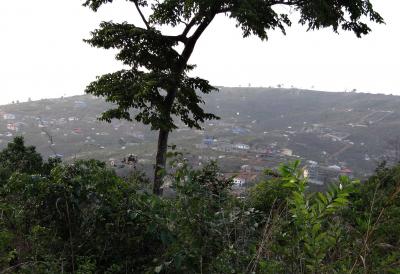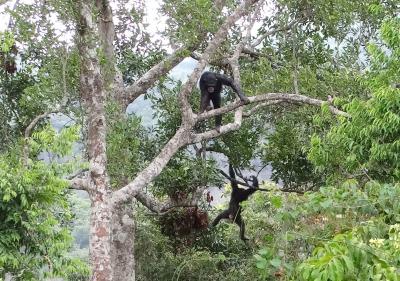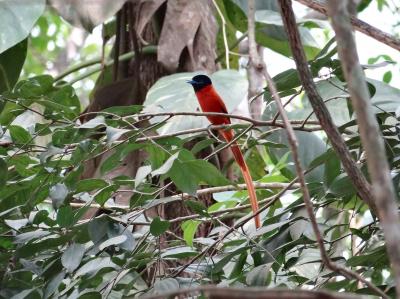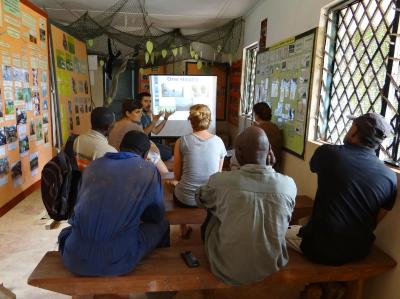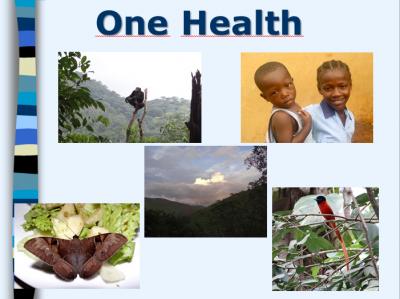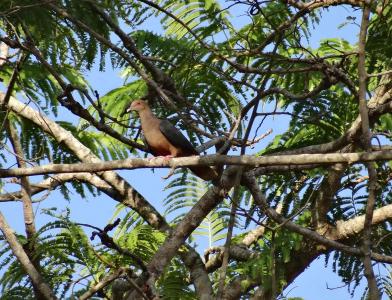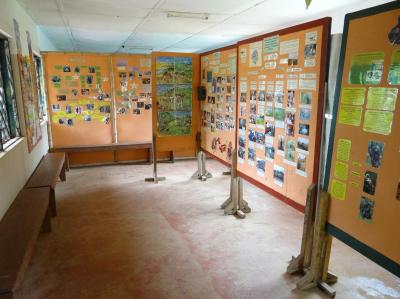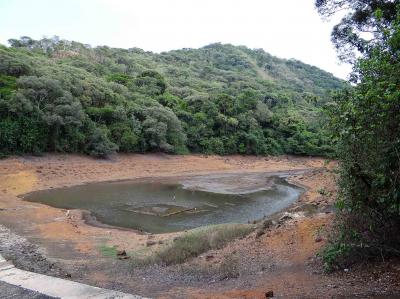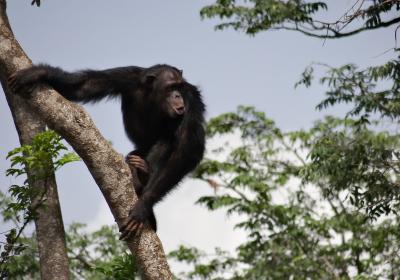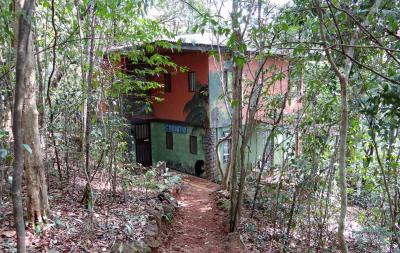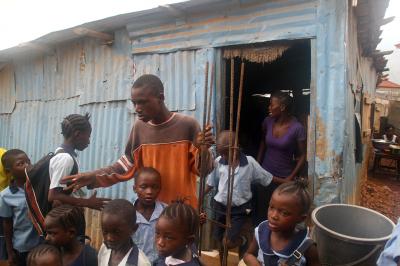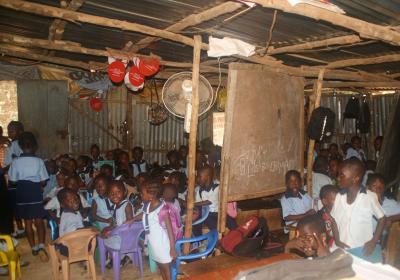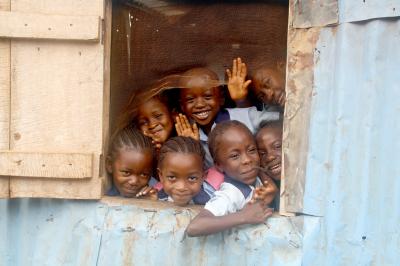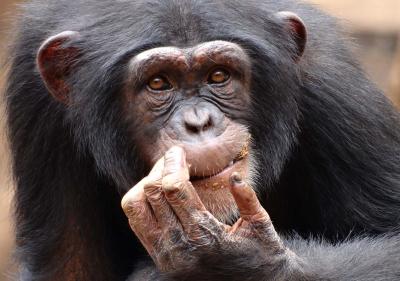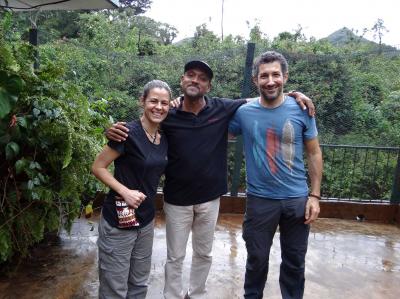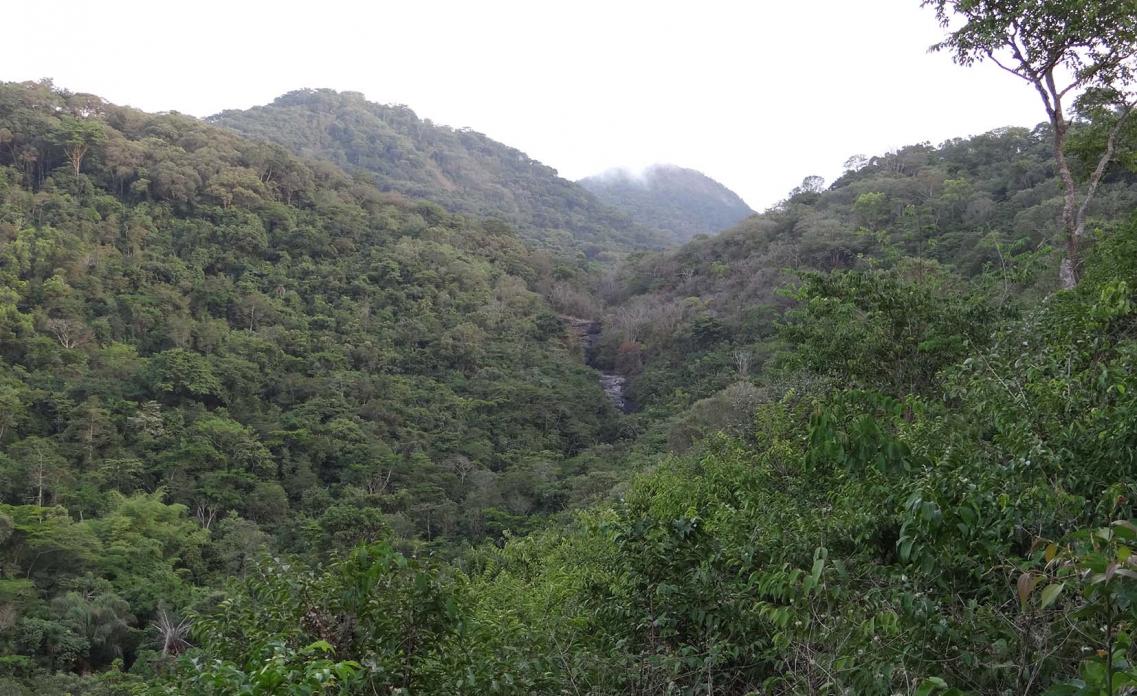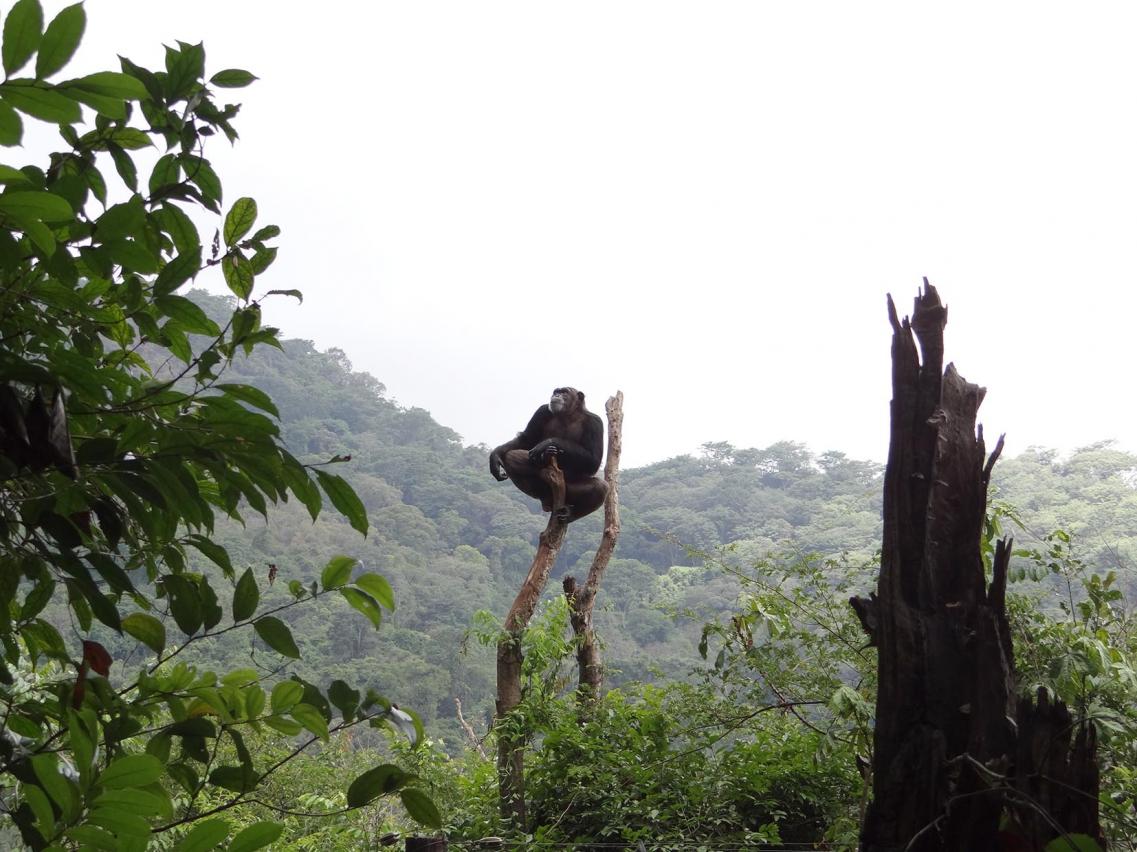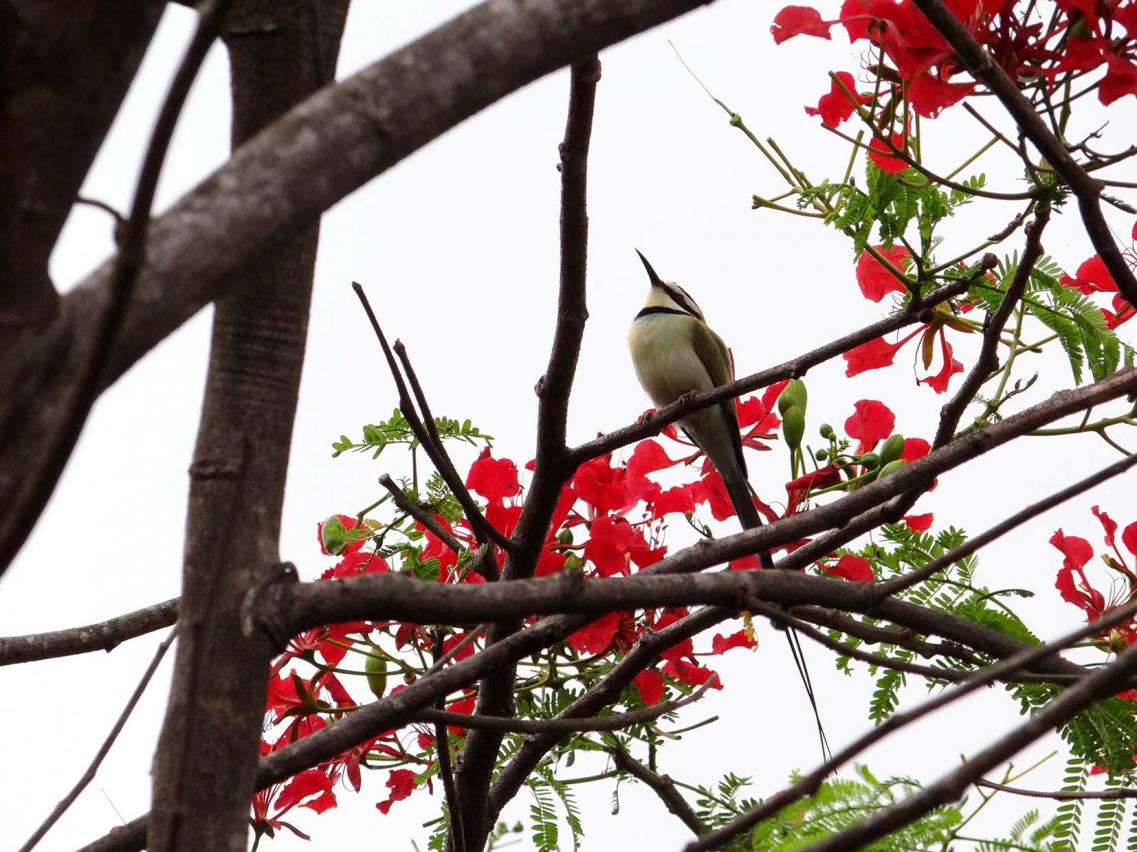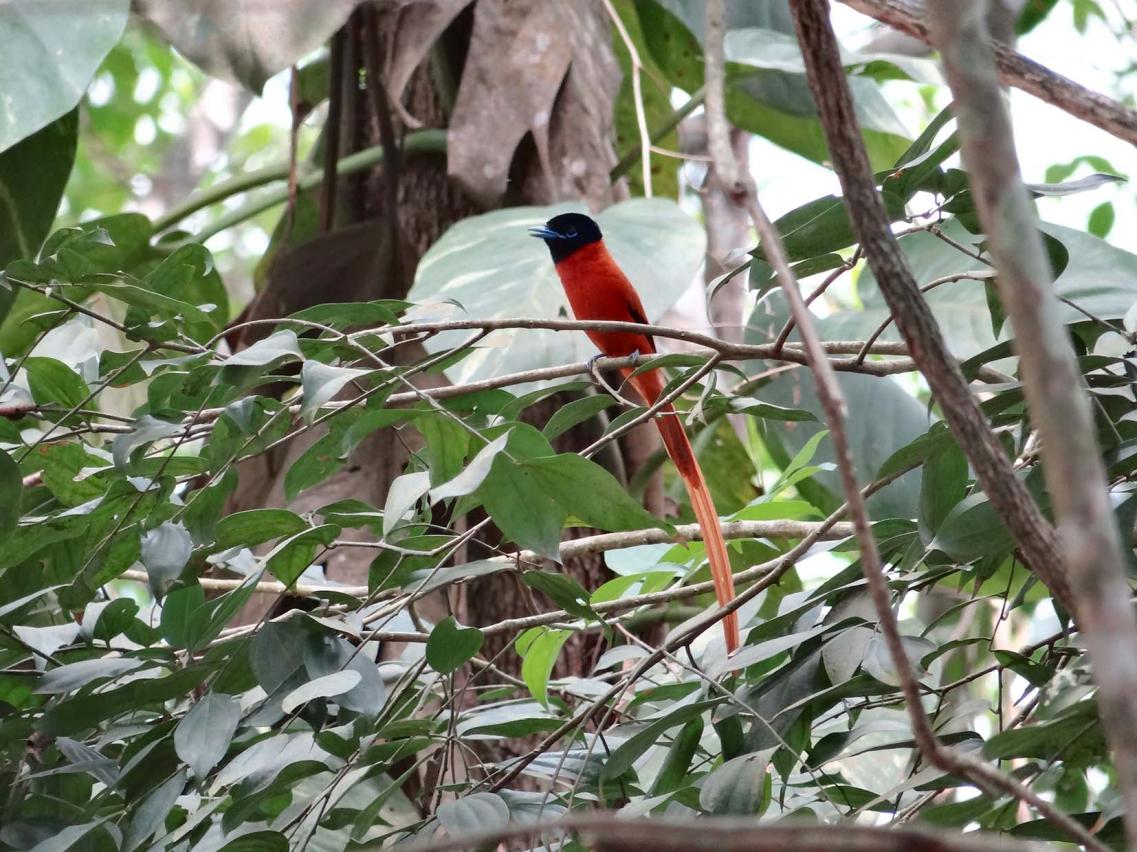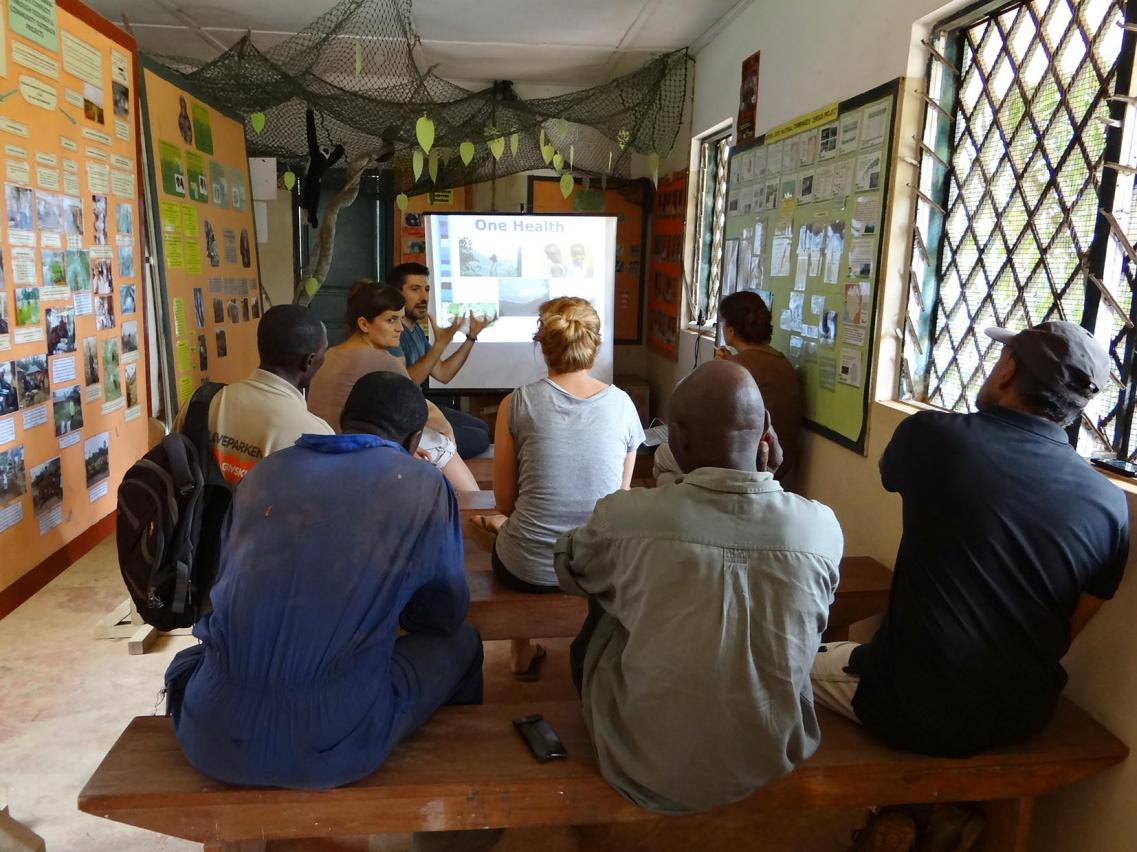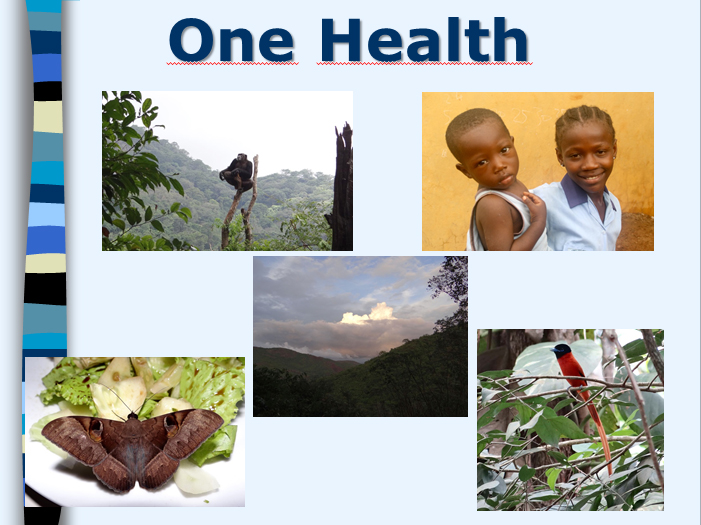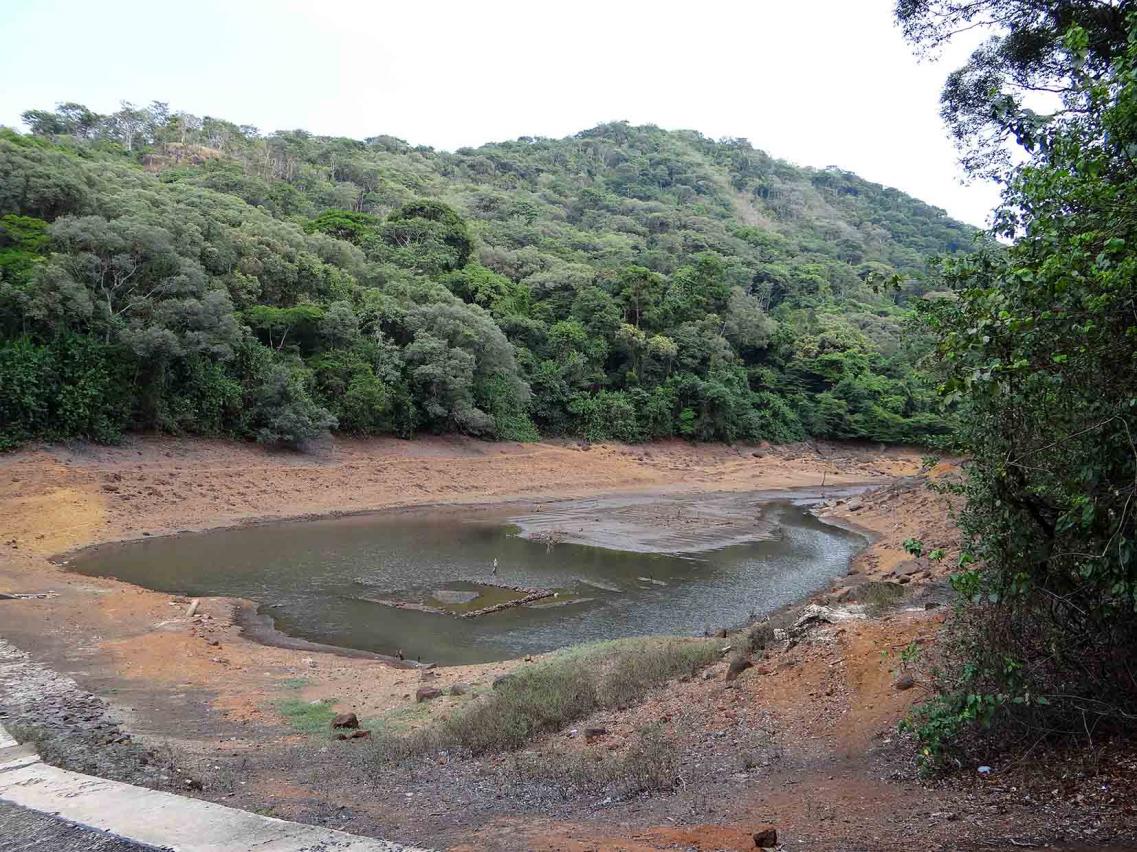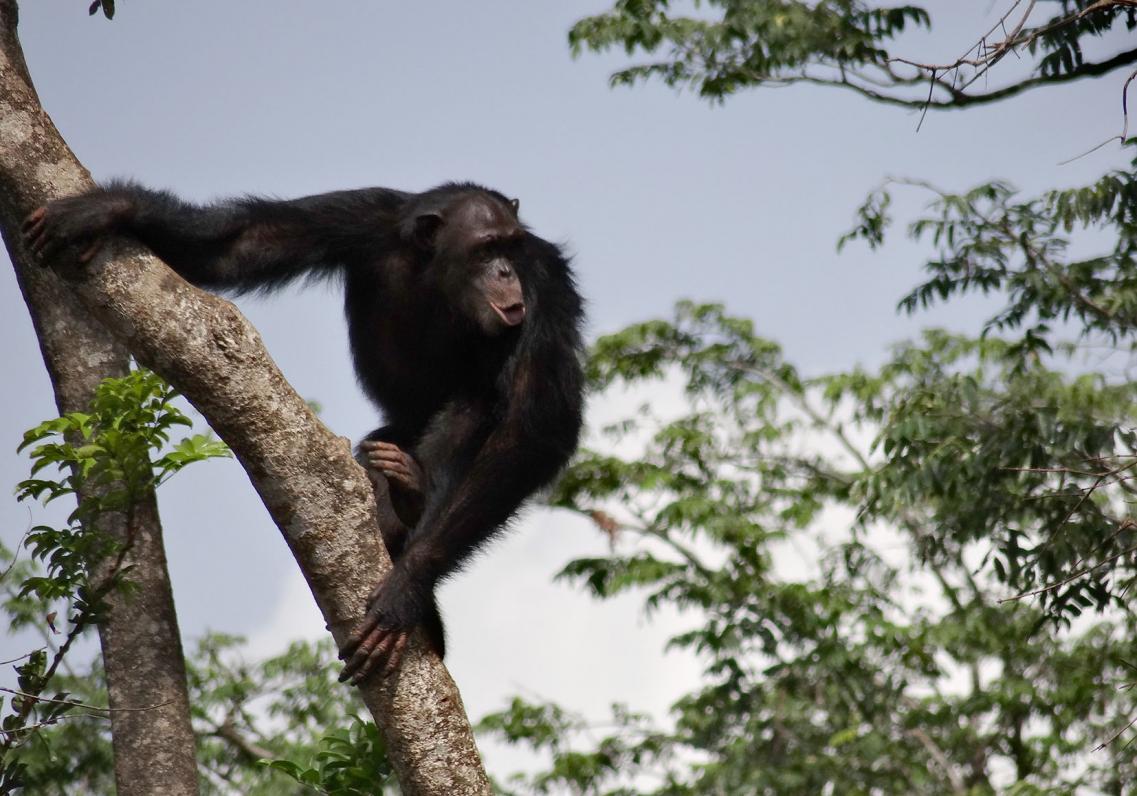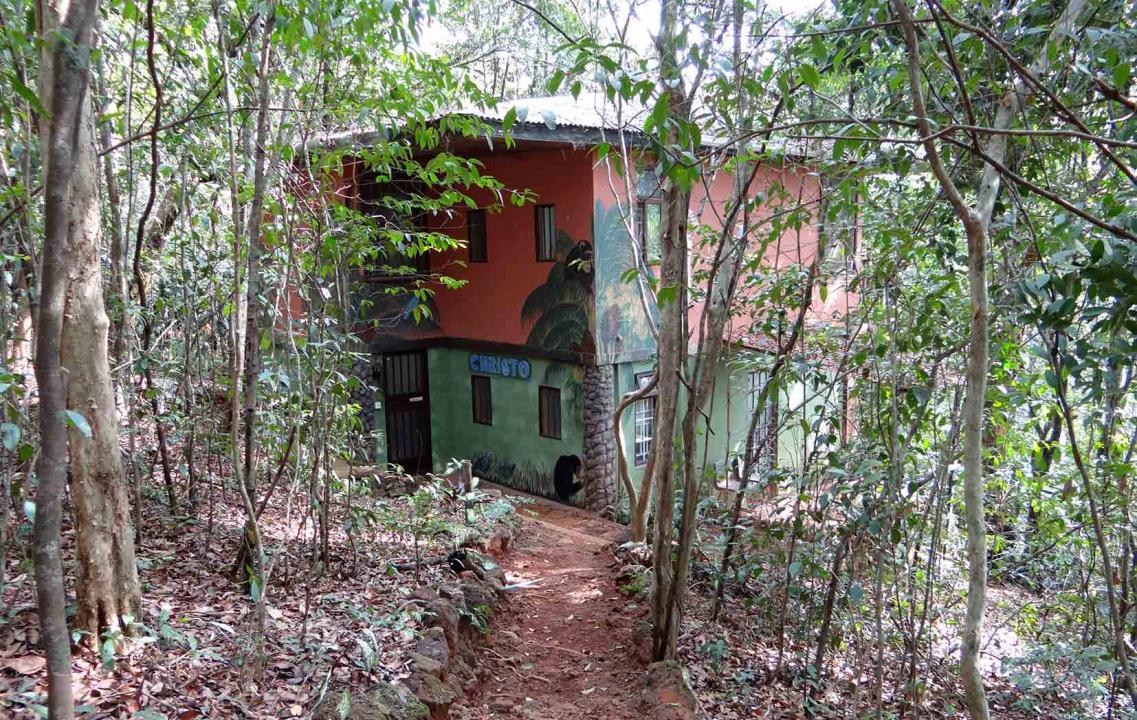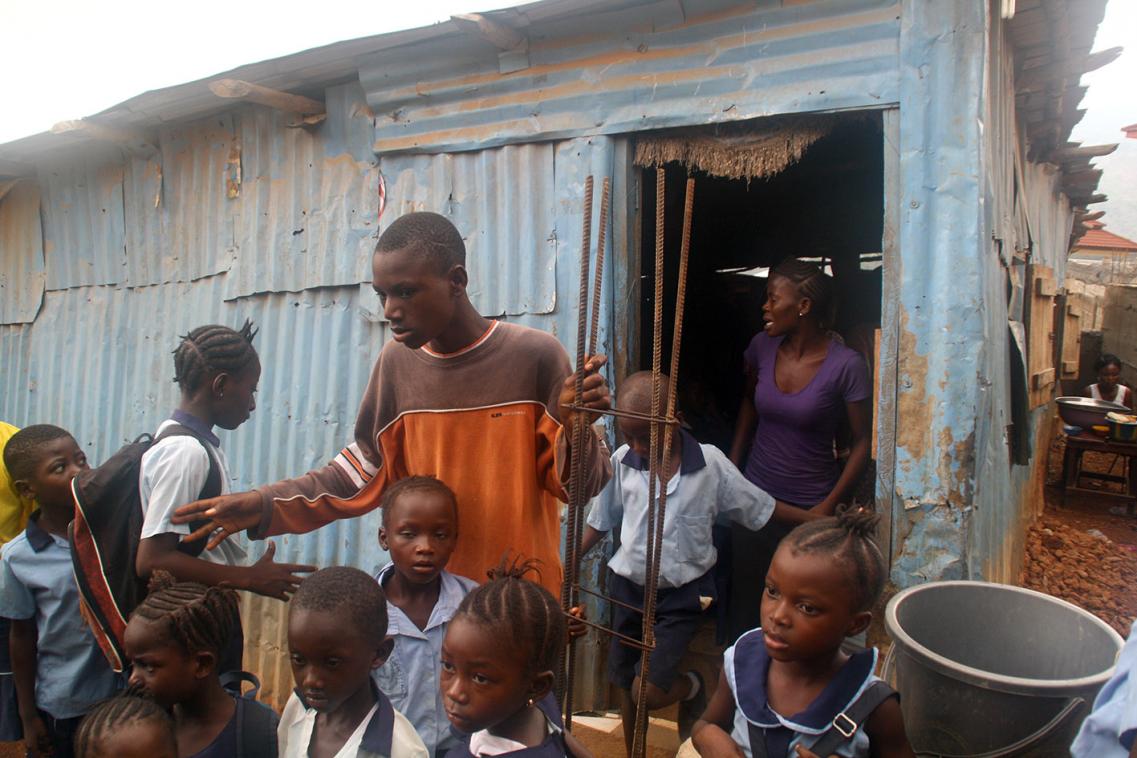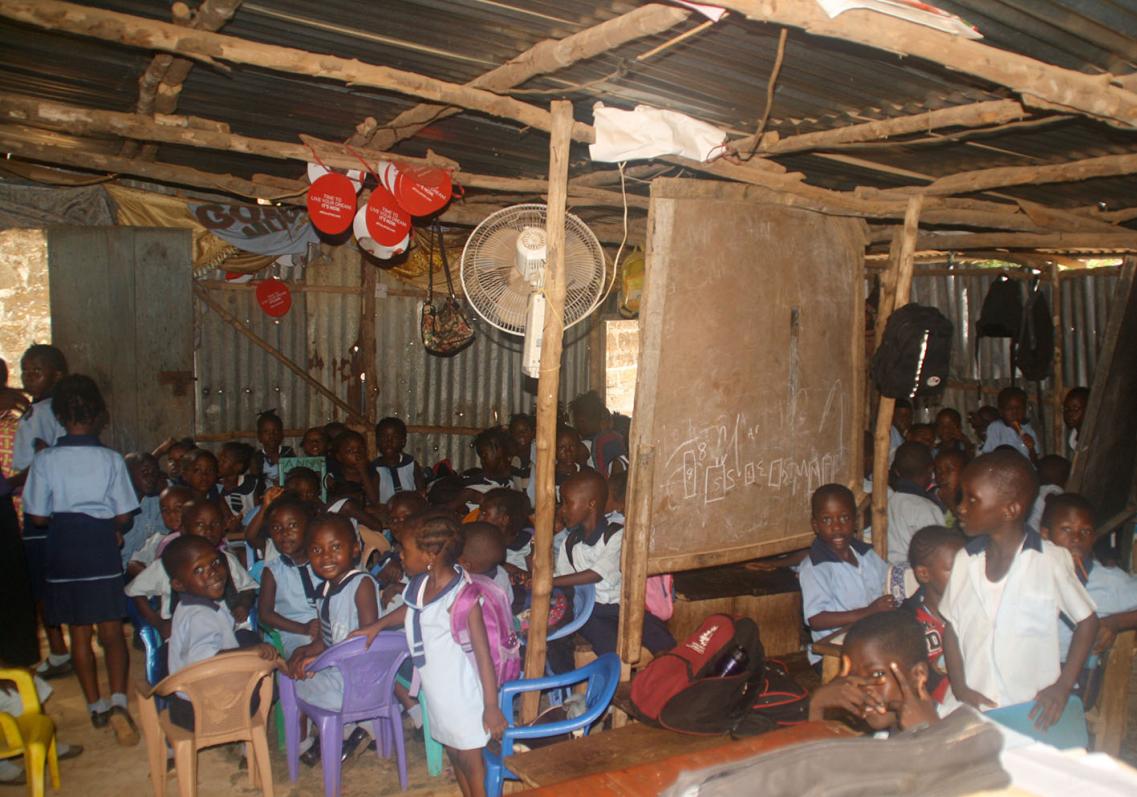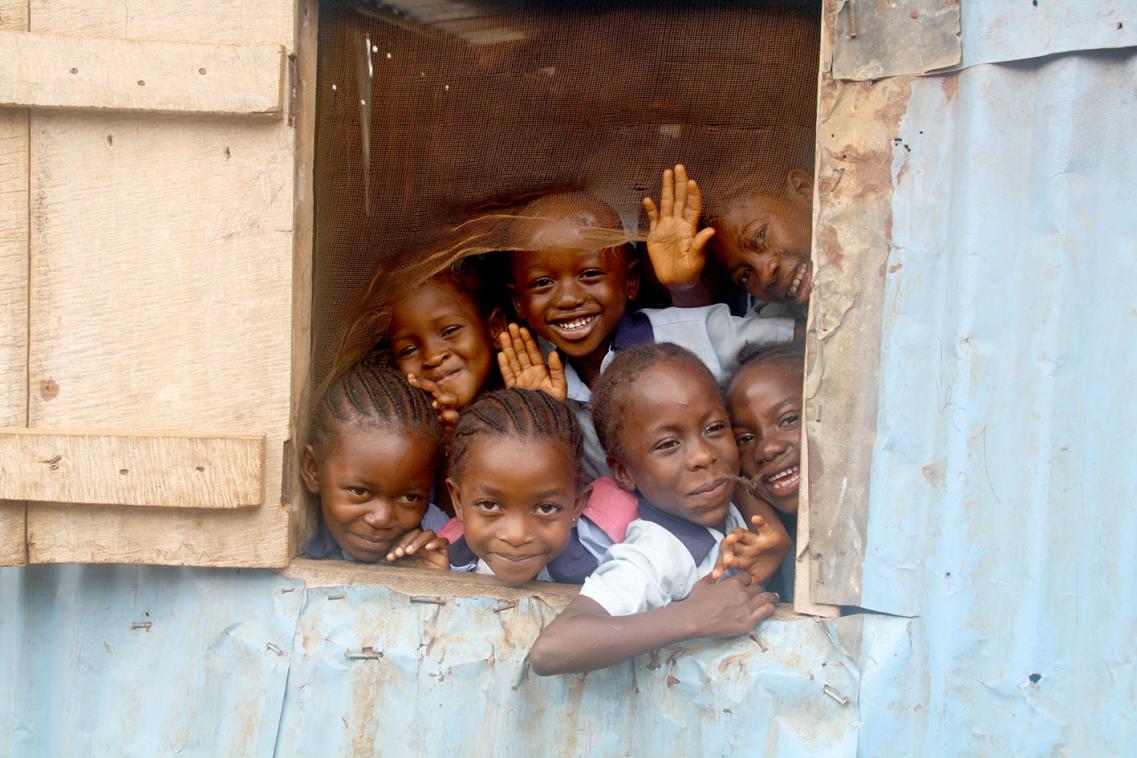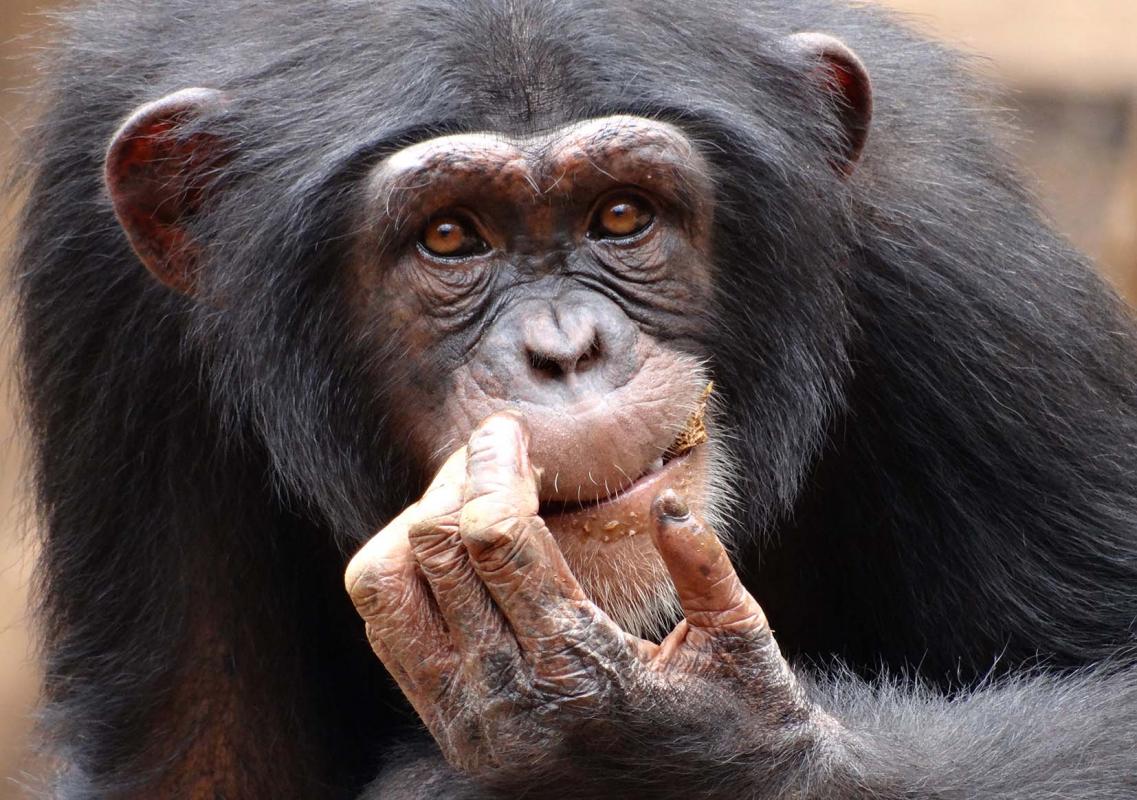Ampliación del Proyecto con Tacugama Chimpanzee Sanctuary - Alcance Global
Resumen primera visita a Tacugama (22-27/05/2016)
Durante nuestra primera visita a Tacugama Chimpanzee Sanctuary tuvimos oportunidad de conocer a Bala Amarasekaran, quien fundó este santuario en 1995 y junto con su equipo lo ha hecho crecer y sobrevivir a una guerra exageradamente cruenta, tras la cual lo ha convertido en uno de los centros de rehabilitación y conservación de póngidos más reconocidos del mundo.
Con Sophie Moittié, veterinaria del santuario, revisamos el protocolo de necropsias y muestreo para estudios especiales de diagnóstico. Le entregamos una donación de fungibles de Jennifer Jahn (Clínica Veterinaria Albatros, Estepona [Málaga]). Impartimos un seminario sobre enfermedades de primates y conceptos de cuarentena y One Health. A primera hora de la mañana participamos en la reunión diaria del personal del centro. Constatamos el excelente estado físico de los más de 70 chimpancés que en este momento alberga Tacugama, casi todos en amplios cercados de selva primaria en los cuales gozan de excelentes oportunidades de ejercicio físico y privacidad. En los alrededores de estas instalaciones circula algún grupo de chimpancés salvajes. La riqueza de fauna de la selva primaria del Western Peninsula National Park, particularmente visible en las aves y artrópodos, es impresionante.
Durante nuestra corta estancia llegaron al santuario 2 nuevas crías de chimpancé decomisadas en un poblado de una zona donde personal de Tacugama realiza censos de chimpancés y trabajo de alcance para el desarrollo de sostenible de los establecimientos humanos. Se les proporcionó los cuidados especiales en la zona de cuarentena por tratarse de animales muy jóvenes y además por padecer enfermedad respiratoria. Las infecciones víricas de origen humano (especialmente virus respiratorio sincitial y metaneumovirus) constituyen una causa importante de mortalidad infantil y juvenil en chimpancés, particularmente cuando se complican con neumonías bacteriana (por Streptococcus pneumoniae). En el centro había 2 crías más todavía en el periodo de cuarentena, lo que nos da una idea de la magnitud del problema de la caza furtiva (para consumo humano) y de las matanzas de grupos de chimpancés que entran en plantaciones en Sierra Leone.
Con el personal del centro que imparte clases de educación ambiental, visitamos dos de las escuelas cercanas al parque donde se realiza esta parte esencial del trabajo de conservación. La primera escuela, de madera y hojalata, albergaba una densidad de escolares de diversas edades hacinados en una única clase sin divisiones; la luz era escasa y la sensación de humedad, calor y falta de ventilación, casi asfixiantes. Los escolares nos recibieron con sonrisas cantándonos una canción de bienvenida en inglés. Sierra Leone, en 2014, estaba considerado el 5º país más pobre del mundo y estimados de 2013 indicaban una mortalidad infantil de aproximadamente el 75%.
En el centro se recibió la visita de pequeños grupos de huérfanos del Ébola a cargo de un voluntario en acción humanitaria; esta enfermedad se ha cobrado recientemente la vida de miles de sierraleoneses en la epidemia más catastrófica conocida, iniciada por contacto de un niño con una colonia de murciélagos alojada en un árbol en el cual jugaba; otras epidemias han coincidido con brotes de mortalidad en chimpancés y gorilas con miles de bajas, en alguno de los cuales se demostró infección. El Ébola parece ser una de las causas mayores del declive de poblaciones salvajes de póngidos. Todos los brotes de Ébola en los que se dispone de datos epidemiológicos sólidos, están asociados a contacto con murciélagos (portadores) y/o caza, manejo o consumo de carcasas de gorilas y chimpancés (FAO, 2015). Éste es un ejemplo mayor del impacto devastador de algunas actividades humanas tanto en póngidos como en las mismas poblaciones humanas. Un estudio de 2010 estimaba que se importan ilegalmente al aeropuerto Charles de Gaulle en París más de 270 toneladas de carne de fauna salvaje sólo vía Air France cada año, mientras que un estudio de 2012 estimaba en 25,000 toneladas el volumen anual de este comercio ilegal en USA.
Mantuve una larga conversación con Bala en la que discutimos las necesidades reales de conservación para Sierra Leone y de las condiciones de extrema pobreza en la primera escuela que visitamos; me advirtió que las condiciones eran peores en las poblaciones que visitan en su programa de censos y alcance en la selva. Todas las opciones de poder contribuir significativamente a conservación pasan por promover la educación ambiental, proporcionada como parte de la educación general en escuelas dignas de nueva construcción, y por promover con proyectos específicos adicionales (por ejemplo, acceso a agua potable) el desarrollo sostenible de las poblaciones humanas en las selvas de Sierra Leone. Uno de los proyectos actuales de Tacugama es contribuir a la construcción de escuelas; existe una ONG (Schools for Salone, www.schoolsforsalone.com) dedicada a la construcción de escuelas en este país (llevan ya 18 construidas y 3 bibliotecas), con la que Tacugama está también colaborando mediante un proyecto de construcción de una escuela en sus zonas de trabajo en censos de chimpancés, cuyo coste es de 35,000 dólares. En definitiva, este viaje ha servido para afianzar nuestro proyecto de colaboración y alcance con Tacugama Chimpanzee Sanctuary, pero nos ha puesto enfrente mismo de todo lo que vemos en la televisión pero que hasta no observas con tus propios ojos no alcanzas a comprender. Esta experiencia, y conocer a Bala y su extraordinario trabajo de conservación, requiere que este programa de Noah’s Path se mueva mucho más allá de la patología, hacia un programa de cooperación global que contribuya al empeño de Bala y su equipo de Tacugama Chimpanzee Sanctuary en construir bases de conservación sólidas para el futuro inmediato. A cualquier interesado en colaborar en este esfuerzo le rogamos se ponga en contacto directamente con el centro (www.tacugama.com) o con nosotros.

